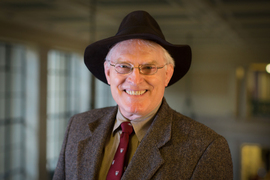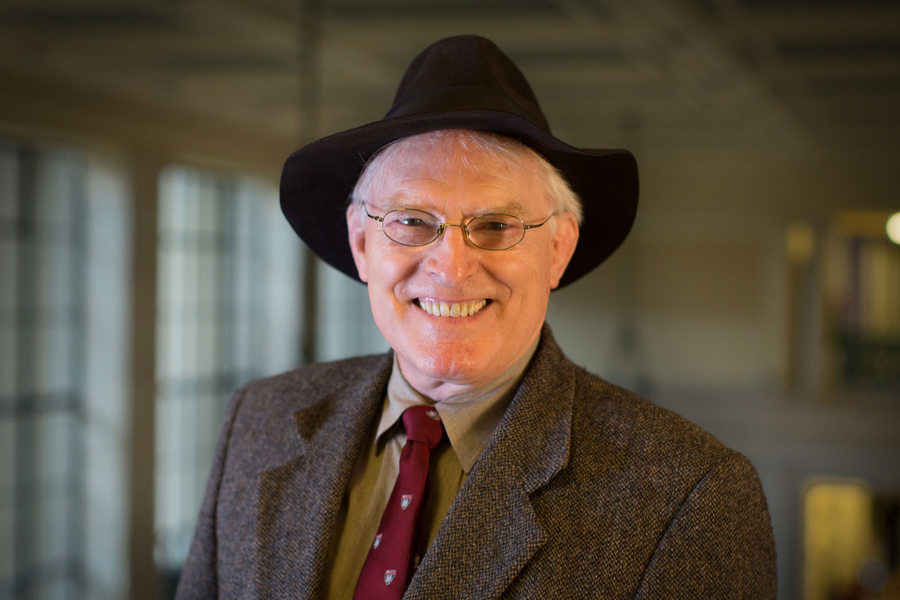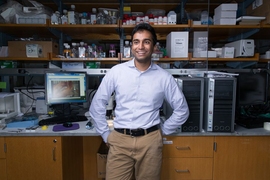William Thilly ’67, ScD ’71, a professor in MIT’s Department of Biological Engineering, died Dec. 24 at his home in Winchester, Massachusetts. He was 79.
Thilly, a pioneer in the study of human genetic mutations, had been a member of the MIT faculty since 1972. Throughout his career, he developed novel ways to measure how environmental mutagens affect human cells, creating assays that are now widely used in toxicology and pharmaceutical development.
He also served as a director of MIT’s Center for Environmental Health Sciences and in the 1980s established MIT’s first Superfund research program — an example of his dedication to ensuring that MIT’s research would have a real-world impact, colleagues say.
“He really was a giant in the field,” says Bevin Engelward, a professor of biological engineering at MIT. “He took his scientific understanding and said, ‘Let’s use this as a tool to go after this real-world problem.’ One of the things that Bill really pushed people on was challenging them to ask the question, ‘Does this research matter? Is this going to make a difference in the real world?’”
In a letter to the MIT community today, MIT President Sally Kornbluth noted that Thilly’s students and postdocs recalled him as “a wise but tough mentor.”
“Many of the students and postdocs Bill trained have become industry leaders in the fields of drug evaluation and toxicology. And he changed the lives of many more MIT students through his generous support of scholarships for undergraduates from diverse educational backgrounds,” Kornbluth wrote.
Tackling real-world problems
Thilly was born on Staten Island, New York, and his family later moved to a farm in Rush Township, located in central Pennsylvania. He earned his bachelor’s degree in biology in 1967 and an ScD in nutritional biochemistry in 1971, both from MIT. In 1972, he joined the MIT faculty as an assistant professor of genetic toxicology.
His research group began with the aim of discovering the origins of disease-causing mutations in humans. In the 1970s, his lab developed an assay that allows for quantitative measurement of mutations in human cells. This test, known as the TK6 assay, allows researchers to identify compounds that are likely to cause mutations, and it is now used by pharmaceutical companies to test whether new drug compounds are safe for human use.
Unlike many previous assays, which could identify only type of mutation at a time, Thilly’s TK6 assay could catch any mutation that would disrupt the function of a gene.
From 1980 to 2001, Thilly served as the director of MIT’s Center for Environmental Health Sciences. During that time, he assembled a cross-disciplinary team, including experts from several MIT departments, that examined the health effects of burning fossil fuels.
“Working in a coordinated manner, the team established more efficient ways to burn fuel, and, importantly, they were able to assess which combustion methods would have the least impact on human and environmental health,” says John Essigmann, the William R. and Betsy P. Leitch Professor of Chemistry, Toxicology, and Biological Engineering at MIT.
Thilly was also instrumental in developing MIT’s first Superfund program. In the 1980s, he mobilized a group of MIT researchers from different disciplines to investigate the effects of the toxic waste at a Superfund site in Woburn, Massachusetts, and help devise remediation plans.
Bringing together scientists and engineers from different fields, who were at the time very siloed within their own departments, was a feat of creativity and leadership, Thilly’s colleagues say, and an example of his dedication to tackling real-world problems.
Later, Thilly utilized a protocol known as denaturing gel electrophoresis to visualize environmentally caused mutations by their ability to alter the melting temperature of the DNA duplex. He used this tool to study human tissue derived from people who had experienced exposure to agents such as tobacco smoke, allowing him to create a rough draft of the mutational spectrum that such agents produce in human cells. This work led him to propose that the mutations in many cancers are likely caused by inaccurate copying of DNA by specialized polymerases known as non-replicative polymerases.
One of Thilly’s most significant discoveries was the fact that cells that are deficient in a DNA repair process called mismatch repair were resistant to certain DNA-damaging agents. Later work by Nobel laureate Paul Modrich ’68 showed how cells lacking mismatch repair become resistant to anticancer drugs.
In 2001, Thilly joined MIT’s newly formed Department of Biological Engineering. During the 2000s, Thilly’s wife, MIT Research Scientist Elena Gostjeva, discovered an unusual, bell-shaped structure in the nuclei of plant cells, known as metakaryotic nuclei. Thilly and Gostjeva later found these nuclei in mammalian stem cells. In recent years, they were exploring the possibility that these cells give rise to tumors, and investigating potential compounds that could be used to combat that type of tumor growth.
A wrestling mentality
Thilly was a dedicated teacher and received the Everett Moore Baker Award for Excellence in Undergraduate Teaching in 1974. In 1991, a series of courses he helped to create, called Chemicals in the Environment, was honored with the Irwin Sizer Award for the Most Significant Improvement to MIT Education. Many of the students and postdocs that he trained have become industry leaders in drug evaluation and toxicant identification. This past semester, Thilly and Gostjeva co-taught two undergraduate courses in the biology of metakaryotic stem cells.
A champion wrestler in his youth, Thilly told colleagues that he considered teaching “a contact sport.” “He had this wrestling mentality. He wanted a challenge,” Engelward says. “Whatever the issue was scientifically that he felt needed to be hashed out, he wanted to battle it out.”
In addition to wrestling, Thilly was also a captain of the MIT Rugby Football Club in the 1970s, and one of the founders of the New England Rugby Football Union.
Thilly loved to talk about science and often held court in the hallway outside his office on the seventh floor of Building 16, regaling colleagues and students who happened to come by.
“Bill was the kind of guy who would pull you aside and then start going on and on about some aspect of his work and why it was so important. And he was very passionate about it,” Essigmann recalls. “He was also an amazing scholar of the early literature of not only genetic toxicology, but molecular biology. His scholarship was extremely good, and he'd be the go-to person if you had a question about something.”
Thilly also considered it his duty to question students about their work and to make sure that they were thinking about whether their research would have real-world applications.
“He really was tough, but I think he really did see it as his responsibility. I think he felt like he needed to always be pushing people to do better when it comes to the real world,” Engelward says. “That’s a huge legacy. He affected probably hundreds of students, because he would go to the graduate student seminar series and he was always asking questions, always pushing people.”
Thilly was a strong proponent of recruiting more underserved students to MIT and made many trips to historically Black universities and colleges to recruit applicants. He also donated more than $1 million to scholarship funds for underserved students, according to colleagues.
While an undergraduate at MIT, Thilly also made a significant mark in the world of breakfast cereals. During the summer of 1965, he worked as an intern at Kellogg’s, where he was given the opportunity to create his own cereal, according to the breakfast food blog Extra Crispy. His experiments with dried apples and leftover O’s led to the invention of the cereal that eventually became Apple Jacks.
In addition to his wife, Thilly is survived by five children: William, Grethe, Walter, and Audrey Thilly, and Fedor Gostjeva; a brother, Walter; a sister, Joan Harmon; and two grandchildren.








